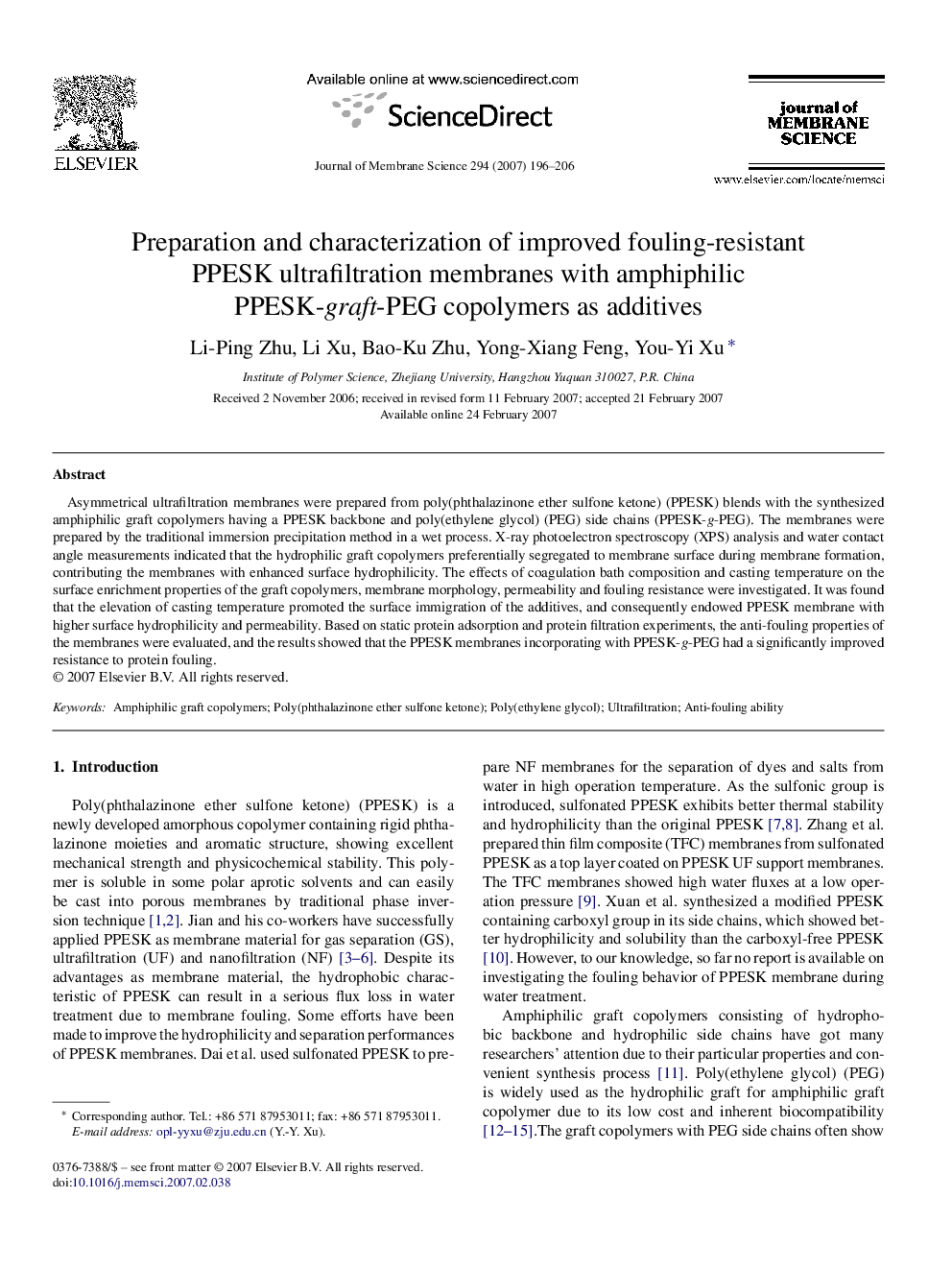| Article ID | Journal | Published Year | Pages | File Type |
|---|---|---|---|---|
| 638779 | Journal of Membrane Science | 2007 | 11 Pages |
Asymmetrical ultrafiltration membranes were prepared from poly(phthalazinone ether sulfone ketone) (PPESK) blends with the synthesized amphiphilic graft copolymers having a PPESK backbone and poly(ethylene glycol) (PEG) side chains (PPESK-g-PEG). The membranes were prepared by the traditional immersion precipitation method in a wet process. X-ray photoelectron spectroscopy (XPS) analysis and water contact angle measurements indicated that the hydrophilic graft copolymers preferentially segregated to membrane surface during membrane formation, contributing the membranes with enhanced surface hydrophilicity. The effects of coagulation bath composition and casting temperature on the surface enrichment properties of the graft copolymers, membrane morphology, permeability and fouling resistance were investigated. It was found that the elevation of casting temperature promoted the surface immigration of the additives, and consequently endowed PPESK membrane with higher surface hydrophilicity and permeability. Based on static protein adsorption and protein filtration experiments, the anti-fouling properties of the membranes were evaluated, and the results showed that the PPESK membranes incorporating with PPESK-g-PEG had a significantly improved resistance to protein fouling.
